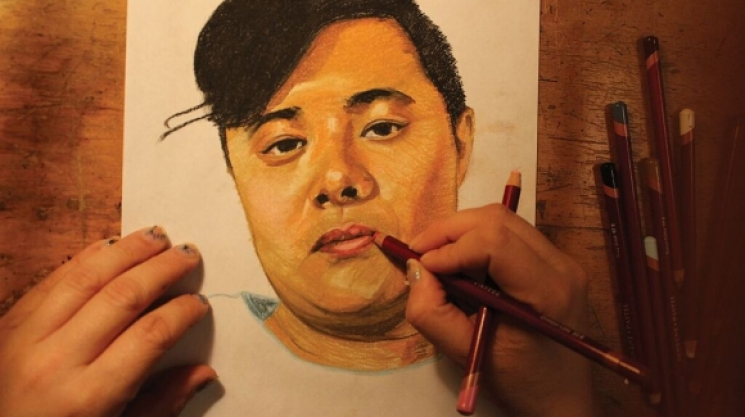
Fri, 02/05/2016 - 10:59 by vanessa
While Elisha Lim is often recognized for the graphic novel “100 Butches” — a collection of queer portraits and anecdotes amassed while travelling around the world — the Toronto-based artist also has some curatorial experiences to talk about, and shares both some of Syrus Marcus Ware’s curatorial take on the matter and Marc-André Giguère’s artist opinions.
With social media bringing a greater critical mass to community building and social activism — for example, “Black Lives Matter” or Qouleur, a Montreal festival founded by Elisha Lim that brings visibility for queer people of colour — “arts have been a fantastic way to share a message.” The graphic novelist who’s had curating opportunities through Qouleur and the That’s So Gay exhibition at the Gladstone Hotel in Toronto, defines the job with images: “I think, for me, curating is about building community. It’s sort of bringing together that perfect dinner party so that people can meet each other.” After all, curating is pretty much all about fostering bridges behind the scenes and getting along with everyone implicated in the process of putting together a show. In no way does Lim diminish the importance of the curator’s role though: the illustrator believes an art curator has many responsibilities and, should anything go wrong in the final exhibit, it wouldn’t be the artist’s fault. “I do think that, as a curator, you have more control, so there’s definitely a benefit to that. You know, I’m so involved in the art world, but I’m becoming increasingly depressed by the role of the artist because it feels like our artists have very little power.” Many artists, including Marc-André Giguère, share that feeling of lack of control over their destiny as artists. The recurring thought amongst artists is that the work isn’t always enough. Support can be hard to get and the lack of flexibility in our institutions isn’t making things easier.
Coming from a social justice and anti-racism approach, Lim stresses the fact that a good curator thinks about the vast majority of the people in the city rather than a small particular group when preparing an exhibit, pays attention to social issues, has empathy and is open-minded. This way, there is room for building more diversity and understanding within the community. The illustrator, who is starting a Masters in critical curating next September, sees the possibility of effecting social change through art curating as gratifying as harvesting the glory of an exhibition as an artist.
Now, art curators may or may not become role models for each and every artist. We all pick up values and life lessons from our peers; it’s only normal that an art curator might become a role model, the same way one could have an artist play that particular role to them. The approach, dynamic and relationship built between two people through time all influence this matter. Nonetheless, some things remain crystal clear and seem to be most curators’ standpoint. “I really think curators have a very important job,” adds Lim. “They have to research well, understand what are the contemporary conversations happening in society, and know who are the artists they feel speak those conversations. I feel like they have to know exactly what they are getting into.”




Add comment